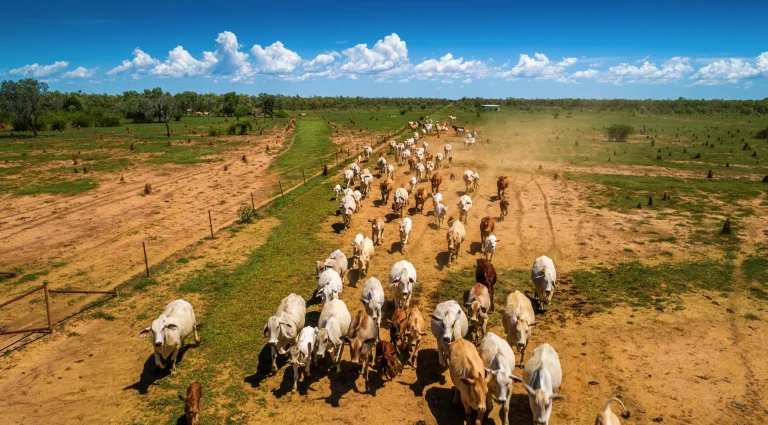Calculating Investment Returns for Cotton Farming Ventures
Cotton farming represents one of the most significant agricultural investment opportunities in Australia, with the potential for substantial returns when managed correctly. For investors considering calculating investment returns for cotton farming ventures, understanding the complex financial dynamics of this sector is essential for making informed decisions. Cotton operations require careful analysis of multiple variables including land costs, operational expenses, yield expectations, and market conditions to determine true profitability.
At Agribusiness Horizons, we specialize in helping investors navigate the intricacies of agricultural property investments, including comprehensive financial analysis for cotton farming operations. Our expertise in calculating investment returns for cotton farming ventures enables clients to make strategic decisions based on thorough market intelligence and proven methodologies. Whether you’re evaluating existing cotton properties or considering new developments, our team provides the analytical framework necessary to assess potential returns accurately.
This comprehensive analysis will examine the key components of cotton farming investment calculations, from initial capital requirements to ongoing operational considerations, helping you understand how to evaluate these significant agricultural opportunities effectively.
Understanding Cotton Farming Investment Fundamentals
Cotton farming investments differ significantly from other agricultural sectors due to the crop’s unique characteristics and market dynamics. The fiber crop requires substantial upfront investments in specialized equipment, irrigation infrastructure, and processing facilities, making accurate return calculations crucial for investment success.
Modern cotton operations typically involve sophisticated irrigation systems, precision planting equipment, and advanced harvesting machinery. These capital-intensive requirements mean that calculating investment returns for cotton farming ventures must account for significant depreciation schedules and equipment replacement cycles. The initial investment often includes land acquisition, water rights, machinery purchases, and infrastructure development.
Cotton’s annual growing cycle creates distinct cash flow patterns that investors must understand when evaluating potential returns. Unlike perennial crops that provide ongoing yields, cotton requires annual replanting and intensive management throughout the growing season. This characteristic affects both the timing of capital expenditures and revenue recognition in financial projections.
The crop’s sensitivity to weather conditions, pest pressures, and market fluctuations adds complexity to return calculations. Successful cotton farming ventures require comprehensive risk management strategies that account for these variables while maintaining profitability targets.
Key Financial Metrics for Cotton Investment Analysis
When calculating investment returns for cotton farming ventures, several critical financial metrics provide insight into potential profitability. These metrics help investors compare different opportunities and assess the viability of specific cotton farming operations.
Return on Investment (ROI) Analysis
– Initial capital investment including land, equipment, and infrastructure
– Annual operating costs including labor, inputs, and maintenance
– Gross revenue projections based on yield expectations and pricing
– Net profit margins after all expenses and depreciation
Cash Flow Projections
– Seasonal cash flow patterns reflecting cotton’s annual cycle
– Working capital requirements for operational expenses
– Equipment financing and debt service obligations
– Reserve funds for weather-related risks and market volatility
Break-even Analysis
– Minimum yield requirements to cover operational costs
– Price points necessary for profitability at various yield levels
– Cost per bale calculations including all direct and indirect expenses
– Sensitivity analysis for different scenarios
Long-term Value Creation
– Land appreciation potential in cotton-growing regions
– Infrastructure improvements that enhance property value
– Water rights and irrigation system investments
– Operational efficiency improvements over time
Operational Factors Affecting Cotton Investment Returns
Cotton farming ventures face unique operational challenges that directly impact investment returns. Understanding these factors is essential when calculating investment returns for cotton farming ventures, as they significantly influence both costs and revenues.
Irrigation management represents one of the most critical operational factors affecting cotton profitability. Cotton requires substantial water inputs throughout the growing season, making efficient irrigation systems essential for maximizing yields while controlling costs. Modern drip irrigation and precision application technologies can improve water use efficiency, but require significant capital investments that must be factored into return calculations.
Pest and disease management costs can vary dramatically between seasons and regions, affecting both operational expenses and yield outcomes. Integrated pest management strategies help control these costs while maintaining production levels, but require ongoing investment in monitoring systems and treatment protocols.
Labor requirements for cotton operations include both seasonal and permanent staffing needs. Planting, cultivation, and harvesting activities require skilled operators and specialized equipment, while ongoing maintenance and management demand year-round attention. These labor costs must be accurately projected when calculating investment returns for cotton farming ventures.
Input costs including seeds, fertilizers, pesticides, and fuel represent significant operational expenses that fluctuate with commodity markets. Successful cotton farming ventures implement strategic purchasing and inventory management practices to control these costs while ensuring adequate supplies for optimal production.
Market Dynamics and Pricing Considerations
Cotton markets operate on both domestic and international levels, creating complex pricing dynamics that affect investment returns. Global supply and demand factors, trade policies, and currency fluctuations all influence cotton prices, making market analysis essential for accurate return calculations.
Australian cotton enjoys strong demand in international markets, particularly in Asia, where textile manufacturing drives consumption. This export orientation means that cotton farming ventures benefit from global market access but also face exposure to international economic conditions and trade relationships.
Price volatility represents both opportunity and risk for cotton investors. While favorable market conditions can generate exceptional returns, adverse pricing periods can significantly impact profitability. Successful cotton farming ventures often employ risk management strategies including forward contracting, crop insurance, and diversified marketing approaches.
Quality premiums for high-grade cotton can substantially enhance returns for well-managed operations. Factors including fiber length, strength, and micronaire affect pricing, with premium cotton commanding significant price advantages over standard grades. Investment in quality-focused production systems can improve these premiums over time.
Seasonal pricing patterns reflect cotton’s annual production cycle and global supply dynamics. Understanding these patterns helps investors optimize marketing strategies and cash flow management, potentially improving overall returns through strategic timing of sales.
Comparison of Cotton Investment Approaches
| Investment Approach | Capital Requirements | Management Intensity | Risk Level | Return Potential |
|---|---|---|---|---|
| Direct Land Ownership | High | High | Moderate | High |
| Lease Operations | Moderate | High | Moderate | Moderate |
| Joint Ventures | Variable | Moderate | Moderate | Moderate |
| Managed Investments | Low | Low | Low | Low-Moderate |
| Integrated Operations | Very High | Very High | High | Very High |
This comparison illustrates the relationship between different investment structures and their associated risk-return profiles. Each approach offers distinct advantages depending on investor objectives, capital availability, and risk tolerance.
Agribusiness Horizons’ Approach to Cotton Investment Analysis
At Agribusiness Horizons, we bring specialized expertise to calculating investment returns for cotton farming ventures through our comprehensive analytical framework. Our approach combines detailed financial modeling with practical agricultural knowledge to provide investors with accurate, actionable insights.
Our valuation methodology incorporates comparable transaction analysis, discounted cash flow modeling, and sensitivity testing against key variables including yield variations, price fluctuations, and input cost changes. This multi-faceted approach ensures that our clients receive thorough analysis of potential cotton farming investments.
We leverage our extensive database of cotton farming transactions and operational benchmarks to provide context for investment decisions. This market intelligence helps investors understand how specific opportunities compare to industry standards and identify properties with superior return potential.
Our team’s expertise extends beyond financial analysis to include agronomic assessment, water rights evaluation, and infrastructure optimization. This comprehensive approach ensures that all factors affecting cotton farming returns are properly considered in our investment analysis.
We also provide ongoing support throughout the investment process, from initial evaluation through acquisition and operational optimization. Our clients benefit from continuous market monitoring and strategic advice to maximize returns from their cotton farming ventures.
Future Trends Affecting Cotton Investment Returns
Several emerging trends are reshaping the cotton farming landscape and affecting investment return calculations. Technological advances in precision agriculture, including GPS-guided equipment, satellite monitoring, and automated irrigation systems, are improving operational efficiency and reducing costs.
Sustainability initiatives are becoming increasingly important in cotton production, with consumer demand driving adoption of environmentally responsible farming practices. These initiatives often require additional investments but can generate premium pricing and improved long-term viability.
Climate adaptation strategies are becoming essential for cotton farming ventures as weather patterns become more variable. Investments in drought-resistant varieties, improved irrigation systems, and risk management technologies help protect returns against climate-related risks.
Market consolidation in the cotton industry is creating opportunities for larger, more efficient operations while challenging smaller producers. This trend affects both acquisition opportunities and competitive dynamics in cotton farming investments.
Regulatory changes affecting water usage, chemical applications, and environmental compliance continue to influence operational costs and management requirements. Staying ahead of these changes is crucial for maintaining profitability in cotton farming ventures.
Conclusion
Successfully calculating investment returns for cotton farming ventures requires comprehensive analysis of multiple interconnected factors, from initial capital requirements to long-term market dynamics. The complexity of cotton farming operations demands sophisticated financial modeling that accounts for operational variables, market conditions, and risk factors that can significantly impact profitability.
Understanding the seasonal nature of cotton production, the capital-intensive requirements of modern operations, and the global market dynamics affecting pricing is essential for accurate return calculations. Investors must consider both the substantial opportunities and inherent risks associated with cotton farming ventures when evaluating potential investments.
As you consider cotton farming investment opportunities, several thought-provoking questions emerge: How will advancing agricultural technologies affect the competitive landscape for cotton farming ventures? What role will sustainability requirements play in shaping future investment returns? How can investors best position themselves to capitalize on evolving market conditions while managing operational risks?
The complexity of calculating investment returns for cotton farming ventures makes professional guidance invaluable. At Agribusiness Horizons, we combine deep agricultural expertise with sophisticated financial analysis to help investors make informed decisions about cotton farming opportunities. Contact us today at +61 428 651 144 or visit our website at https://agribusinesshorizons.com/contact/ to discuss how our specialized knowledge can support your cotton farming investment analysis and help you achieve your agricultural investment objectives.



